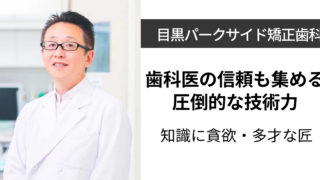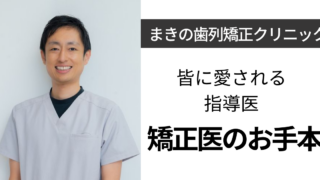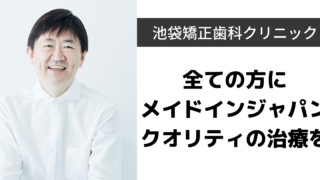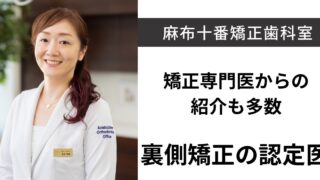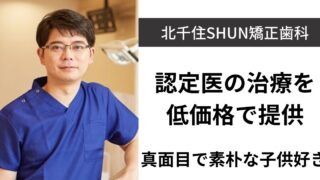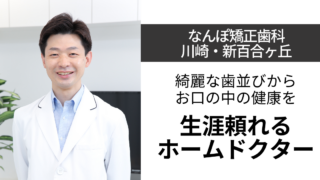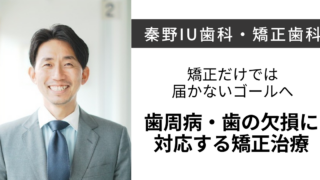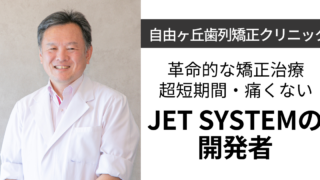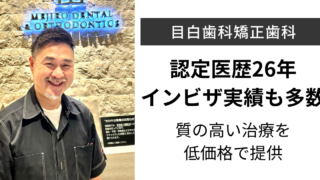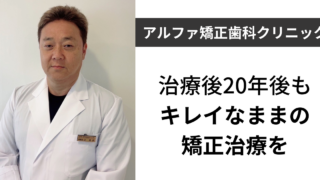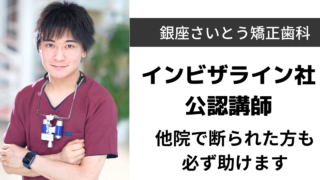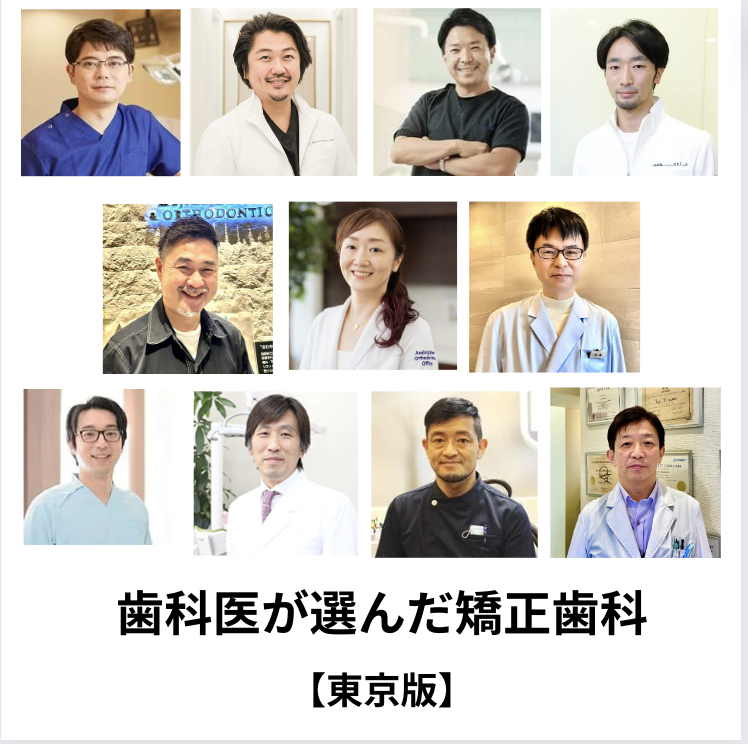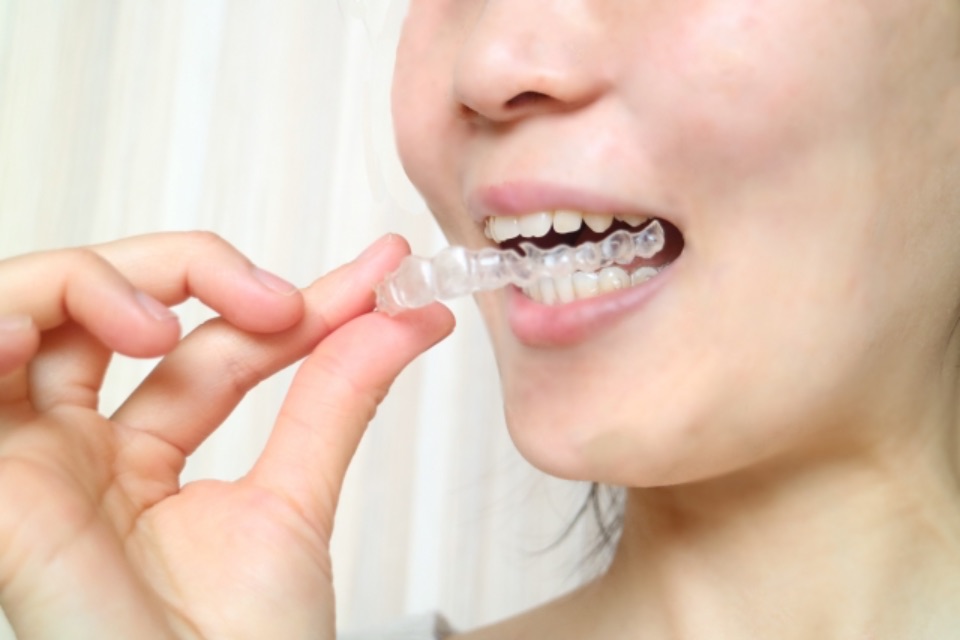
40代、50代の矯正で知っておくべきメリットデメリット

歯並びをきれいにしたいと思っているのですが、年齢のこともあって迷っていて…
40代・50代くらいから矯正を始めても大丈夫でしょうか?

もちろんです!矯正を受ける40代・50代の人の割合は10年間で約2倍(※1)に増加しています。

そうなんですね…!矯正をすると歯茎が下がるとか、ほうれい線が濃くなるとか聞いて…
あとは、この年齢になって矯正器具を着けるのも恥ずかしいなと思っていたんです…

確かに、40代・50代の方は矯正にあたって考慮しなくてはいけないこともありますが、そのうえで歯並びを整えることには、見た目以外にもたくさんのメリットがあります。
今回は、40代・50代からの矯正のメリットとデメリットをご紹介します!
※1 矯正歯科医会 2019年『大人の矯正歯科治療に関するアンケート』
40代・50代の矯正のメリット

40代・50代で歯並びを治すメリットは、以下の3つです。
- 見た目の美しさアップ
- 口の機能向上による健康の維持・向上
- 自分に合った治療法をじっくり検討できる
見た目の美しさアップ
笑顔になったときに見える歯の向きが整っていると、端正な印象や清潔感を与えることができるので、見た目の美しさがアップします。
40代・50代で歯並びが乱れて審美性が低下することもある
20代・30代で矯正に興味が無かった方も以下のような要因で歯並びが乱れることもあり、40代・50代になってから矯正の必要性を感じ始める人もいます。
歯並びが乱れる要因
- 加齢変化
- 口周りの筋肉の衰え
- 歯肉退縮
- 歯のすり減りによる噛み合わせの高さの変化
- 親知らずの影響
- 歯周病
- 歯の喪失
口の機能向上による健康の維持・向上
歯並びを整えると噛み合わせの改善により口や歯の機能が向上するので、口と全身の健康の維持・向上に役立ちます。
噛み合わせの改善でもたらされるメリットは以下の通りです。
- 歯の寿命が伸びる
- 発音機能の改善
- 身体の健康寿命への貢献
歯の寿命が伸びる
噛み合わせが悪く、一部の歯に負担が掛かり続けると、歯が割れたり削れたりしてダメージを受けます。そのため、噛み合わせを改善すると歯が長持ちします。
また、歯の残存本数と食事の美味しさには相関関係があり、歯が20本以上ある方が食事が美味く感じるという調査報告(※2)もあるため、歯の寿命が長い方が生活の質も高くなります。
※2 8020推進財団 指定研究事業報告2007「食の満足度及び歯科保健行動と現在歯数の関連について」
https://www.8020zaidan.or.jp/member_magazine/pdf/magazine_vol06.pdf
発音機能の改善
歯並びを改善すると発音や滑舌の改善に役立ちます。
歯並びは発音と深い関係があります。発音は歯と舌の形や位置から作られるため、歯並びを整えることで上手く発音できるようになったり、滑舌が良くなったりする可能性があります。
身体の健康寿命への貢献
矯正で噛み合わせが整ってよく噛めるようになると、心と身体にいい影響を与えます。
- 脳の活性化
- 歯が噛み合う刺激が脳を活性化します。
- 肥満防止
- しっかり食べ物を噛むことで、満腹中枢が刺激されるので食べ過ぎ防止になります。
- 胃腸の働きをよくする
- 食べ物を噛み砕いて唾液と混ぜ合わせてから飲み混むことで、消化しやすい形で胃腸に食べ物を送り込めるため、胃腸への負担が少なくなり、消化不良による体調不良が起こりにくくなります。
- ストレス解消
- 脳のメカニズムとして、歯ぎしりや食いしばりにはストレス解消の効果があります。
- 頭痛や肩こりの改善の可能性がある
自分に合っている治療法をじっくり検討できる
10代以下の矯正は、成長期を利用して顎の発育をコントロールするような矯正を行うことがあります。
成長期を利用した矯正ができる期間には限りがあり、場合によっては歯科医院の比較検討をする時間があまり取れないこともあります。
一方、40代・50代の矯正は、成長期が終わった段階で矯正を開始するので、歯並びに対する自分の理想を明確にし、矯正でその理想をどこまで実現できるか、矯正に伴うリスクをどこまで取れるかなどをじっくり検討できます。
40代・50代の矯正のデメリット

40代・50代で行う矯正には、以下のようなデメリットを考慮して治療計画を立てる必要があります。
- 歯周病リスクが高い
- 歯茎が下がりやすい(歯肉退縮)
- 人工の歯は作り直す必要がある場合がある
- インプラントは動かせない
- 歯が動くスピードが遅いことがある
- 抜歯・骨切りの可能性が高くなる
- 顔貌の変化
歯周病リスクが高い
40代以降の歯周病の罹患率は約7割あり、若年層と比べると歯周病にかかるリスクが高いです。(※4)
歯周病は歯を支える骨が溶けてなくなっていく病気なので、骨とともに歯茎が下がり、歯の根本と歯茎の間にブラックトライアングルを形成し、見栄えが悪くなったり、食べ物が詰まりやすくなったりします。
また、歯周病の人が矯正で歯を動かすと病状の悪化を招くため、矯正治療の前に歯周病を改善することと、矯正中の歯磨きをしっかりと行い、歯周病にかからないように十分に注意する必要があります。
※4 医政局歯科保健課 歯科口腔保健推進室「歯周病罹患の現状と対策について」
https://www.mhlw.go.jp/content/10801000/000779831.pdf
歯茎が下がりやすい(歯肉退縮)
矯正による歯肉退縮は、年代に関係なく起こりうるリスクのひとつです。
歯肉退縮は歯周病によっても起こりますが、加齢変化のひとつでもあるため、40代・50代は若年層よりも矯正による歯肉退縮が起こりやすいです。
人工の歯は作り直さないといけないこともある
セラミック矯正などを行い人工の歯が歯の軸と全然違う方向で作られていた場合などは、矯正治療前に作り直す必要がある場合もあります。そういった場合、事前に仮歯にしてから矯正を行い、最後に最終てきな被せものを作って完成とすることが多いです。
また、悪い歯並びに沿って形を作られていた歯などは噛み合わせの高さや歯茎のラインに合わせて、矯正治療後に作り直すこともあります。
インプラントは動かない
インプラントは、矯正で動かすことができません。
インプラントのような人工の歯は動かすことができません。
この場合は、歯が動かないことを考慮して治療計画を立てる必要があります。
歯が動くスピードが遅いことがある
年齢が高くなると骨密度が高くなるので骨が硬くなります。
また、歯の周りの骨の新陳代謝が行われにくくなったりして、歯が動くスピードがゆっくりになることがあります。
抜歯・骨切りの可能性が高くなる
40代・50代は顎の成長が完了しているので、顎の骨の形を変えたり、横顔を整えるために口元を引っ込めたりしたい場合は、抜歯や骨切りをする可能性が高くなります。
顔貌の変化
矯正をすると内側から口周りの皮膚を支えていた歯が引っ込み、口周りの筋肉や皮が空気がなくなった風船のようにしぼんで、ほうれい線や鼻の下の長さが気になることがあります。
40代・50代の矯正の失敗と後悔

40代・50代の矯正のデメリット以外で聞かれる失敗と後悔の声は、以下の3つです。
- 痛かった
- 食べられないものがあって嫌だった
- 外食が不便だった
基本的には、すべての年代で矯正をする方から聞かれる声です。慣れるまで大変ですが、歯並びがきれいになった自分を想像して、がんばりましょう!
痛かった
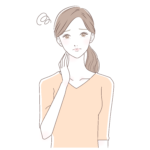
歯が動くときや噛んだときに痛みがあり、イライラしました。
痛みは体調や歯の移動量、使用する矯正装置によっても左右されます。歯が動く痛みは基本的に2〜3日がピークですので、痛み止めを飲んで対処しましょう。
食べられないものがあった

煎餅などの硬い食べ物やお餅が食べられなかったので、辛かったです。
硬いものやお餅は矯正装置に絡まりやすいので、矯正中の食べ物としてはあまりおすすめできません。
食べ物は小さく砕いたり切ったりして食べるなど、食べ物選びには少しコツが必要です。
外食が不便だった

メニュー選びに気を使いますし、食事の度に行う顎関ゴムやマウスピースの取り外し、食後の歯磨きのせいで外食が不便でした。
矯正装置の種類にもよりますが、外食のときは歯磨きや装置の着け外しなどのタイミングを考慮する必要があります。
外出時に使える便利なケアアイテムがあるので、活用するのがおすすめです。
40代・50代で矯正してよかったこと
40代・50代の矯正では、デメリットに目が向きがちですが、矯正してよかったという人の声も多く聞かれます。
- 食事が美味しい!
- 笑顔に自信がついた
- 歯磨きがしやすくなった
- 歯磨きに関する知識やスキルがレベルアップした
痛みや手間を感じて矯正が辛いと感じることもありますが、総合的に見て矯正してよかったと感じる方が多いようです。
矯正は40代・50代からでも遅くありません
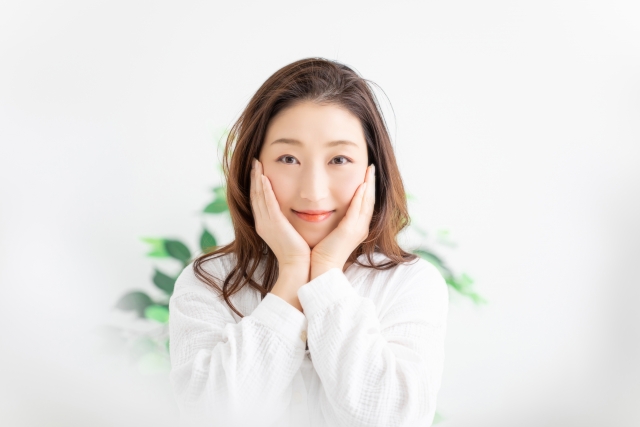
40代・50代の矯正は歯茎が下がる、老ける、失敗しやすいなどのデメリットが先行してしまいがちです。また、これらのリスクがまったくないわけでもありません。
しかし、デメリットを恐れて歯並び治療を先送りにする以上に、歯並びや噛み合わせが整うことで、健康面や審美面にたくさんのメリットがあります。
遅すぎることはないので、気になったらぜひ前向きに検討してみましょう。
365dentistでは、40代・50代の方が安心して矯正を任せられる歯科医院選びのお手伝いをいたします。公式ラインではこれまで多くの方を紹介し治してもらっているベテランの先生や歯科医師から見て正しい矯正専門のキャリアをお持ちの先生のみをご紹介しています。
歯科医師運営のオープンチャットでは悩みや疑問を気軽に相談することもできるので、遊びに来てください!
関連記事:【歯科医師監修】インビザラインの費用相場、医院による費用の違いについて解説
関連記事:きれいな歯並びの条件とは
関連記事:【歯科医師監修】ガミースマイルは矯正で治すことができるの?
365dentist総監修 歯科医師/勝屋友紀子
長崎大学歯学部卒業、〜2018 九州医療センター、2018〜現在 都内歯科クリニック勤務
監修 歯科医師/Naomi
臨床研修終後、都内審美歯科勤務。現在は歯科医師/歯科ライター


